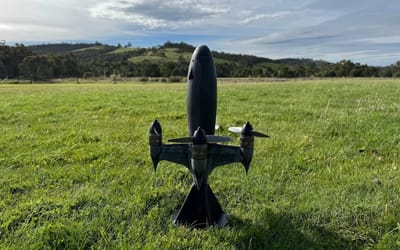Man exposed the truth about whether EVs are good for the environment or a way for governments to make extra money
Published on Aug 28, 2025 at 10:26 AM (UTC+4)
by Molly Davidson
Last updated on Aug 28, 2025 at 8:54 PM (UTC+4)
Edited by
Kate Bain
The UK has already set 2035 as the cut-off for selling new petrol cars, with EVs positioned to be the only option.
YouTuber Mark McCann wanted to know if that future really made sense. Are electric cars actually saving the planet, or are they just a clever way for governments to cash in?
To find out, he spoke to experts, visited dealerships, and even tested the cost of charging himself.
What he uncovered was a mix of hidden costs, surprising savings, and challenges that few people talk about.
DISCOVER SBX CARS – The global premium auction platform powered by Supercar Blondie
Investigating whether EVs are good for the environment
McCann began at the start of every EV story – the battery.
He explained that cobalt, a key material, is mostly mined in the Democratic Republic of Congo, where conditions can be tough and unregulated.
It’s a reminder that the supply chain behind ‘green’ cars isn’t always as clean as it might seem.
He also highlighted manufacturing concerns.


Building an electric car can create roughly double the CO₂ of a petrol car upfront.
Over time, that balance can shift in favor of EVs, but only after years of driving, and it depends on factors like charging source, mileage, and driving style.

When it came to running costs, McCann pointed to Benefit-in-Kind tax as one of the biggest incentives in the UK.
This is the tax charged when a company car is also used for personal driving.
Under this model, petrol vehicles are taxed higher than electric ones.
It feels like a win for EV buyers, but the government still takes its share through 20 percent VAT on every sale and the steady stream of income from ULEZ charges.
And in his own test, McCann found public charging wasn’t always the bargain it’s made out to be.
Topping up a Tesla cost him more than fueling a diesel Golf, highlighting how public charging can be pricier than expected.
All of it showed that while EVs can save drivers money in one area, the costs have a way of catching up elsewhere.
Charging infrastructure
When it comes to infrastructure, McCann argued the UK was nowhere near prepared for full EV adoption.
High-voltage engineers told him the grid would need a total overhaul to cope, meaning ripping up streets, laying new cables, and spending ‘millions and millions’.
Battery recycling was another blind spot.
Even a small dent can write off a pack, and in practice they’re often scrapped rather than repaired.
Nearly a decade into mainstream EVs, only five percent of used batteries are being recycled.
Insurance premiums rise, landfills pile up, and the ‘sustainable future’ slogan starts to look shaky.

Yet McCann’s findings weren’t all bleak.
EVs can still pay off for drivers if charged at home on cheaper overnight rates, and over long ownership they can lower emissions compared to petrol.
Plus, the incentives that governments push, while clearly profitable, do help ordinary people afford cars they never thought possible.
His argument was simple but uncomfortable: EVs aren’t just about saving the planet.
He argued they were also about shifting where the money flows, from petrol pumps and road tax to new cars, charging networks, and corporate energy packages.
McCann’s project didn’t kill the EV dream, but it did provide some nuance.
They can be part of a cleaner future.
Just not without fixing the human cost, the charging costs, and the infrastructure holding them back.
For more, you can subscribe to Mark McCann on YouTube or watch the full video below:
DISCOVER SBX CARS: The global premium car auction platform powered by Supercar Blondie
Molly Davidson is a Junior Content Writer at Supercar Blondie. Based in Melbourne, she holds a double Bachelor’s degree in Arts/Law from Swinburne University and a Master’s of Writing and Publishing from RMIT. Molly has contributed to a range of magazines and journals, developing a strong interest in lifestyle and car news content. When she’s not writing, she’s spending quality time with her rescue English staffy, Boof.




